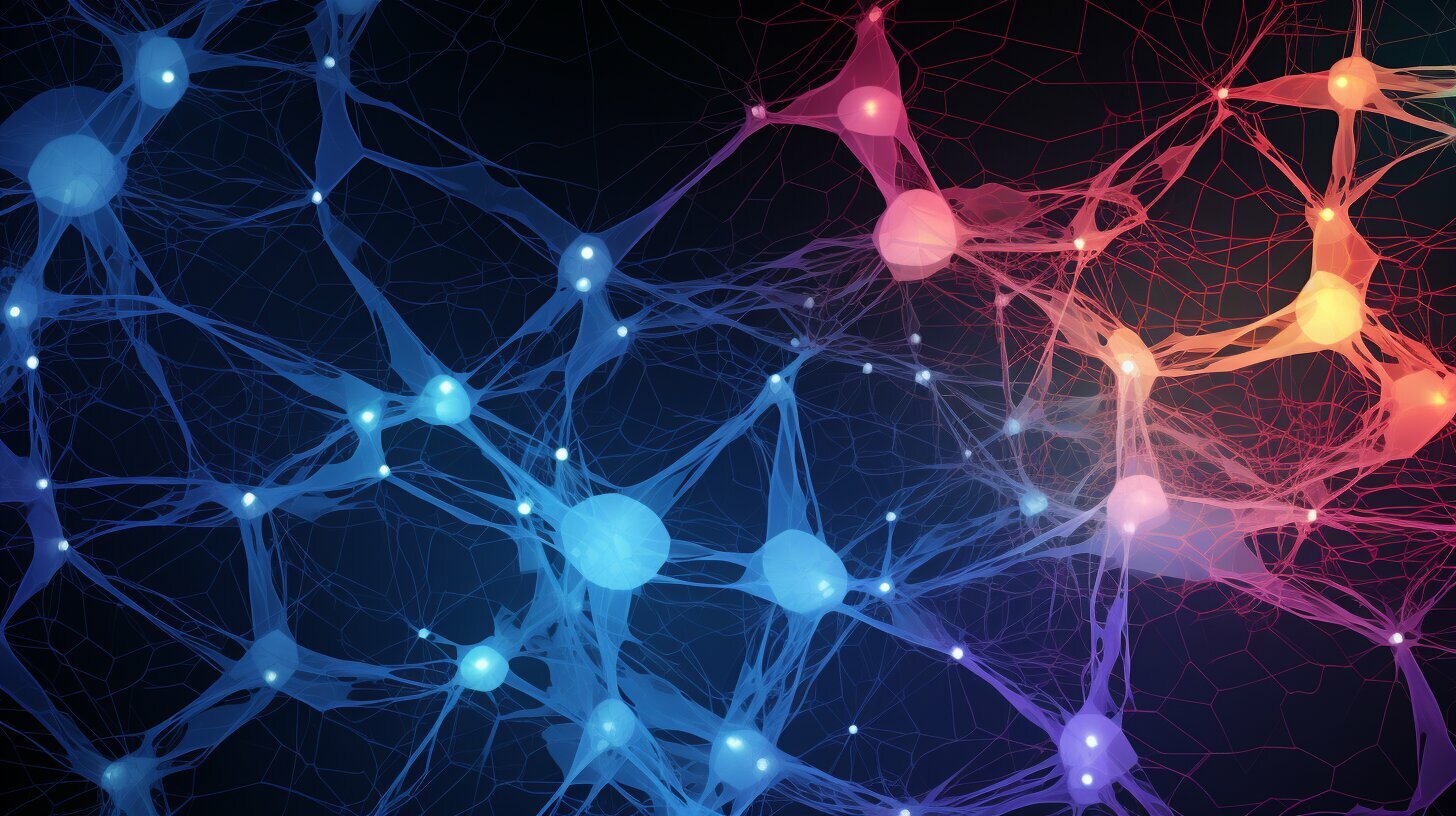We have found 11 effective methods for using educational data mining to enhance personalized learning.
By analyzing data, we can increase student engagement, tailor instruction to individual needs, and identify at-risk students for targeted interventions.
Data insights also enhance adaptive learning platforms, provide real-time feedback, and improve predictive analytics for early intervention.
Furthermore, data-driven strategies enhance student motivation and support differentiated instruction.
With actionable insights, educators are empowered to plan instruction that liberates and empowers students to reach their full potential.
Key Takeaways
- Personalized instruction and tailoring learning needs: Data analysis allows for the identification of patterns and tailors instruction to meet the individual needs of each student, resulting in improved learning outcomes.
- Identifying at-risk students and targeted interventions: Educational data mining helps identify at-risk students by analyzing data from various sources, enabling targeted interventions that provide necessary support and resources for each student’s unique needs and challenges.
- Enhancing adaptive learning platforms and customized learning paths: Educational data mining enhances adaptive learning platforms by using personalized analytics and algorithms to tailor instruction, creating customized learning paths that meet specific needs and allow for real-time progress tracking and intervention.
- Providing real-time feedback for instructional improvement: Real-time assessment and feedback empower personalized learning, supporting growth and allowing for immediate identification of areas needing improvement. This enables teachers to tailor their teaching strategies to meet the specific needs of each student.

Increasing Student Engagement Through Data Analysis
By analyzing data, we can increase student engagement through identifying patterns and tailoring instruction to meet individual needs. Educational data mining allows us to collect and analyze vast amounts of information, providing valuable insights into student performance and behavior. Through this process, we can identify factors that impact student motivation and develop strategies to improve learning outcomes.
Data analysis helps us understand which instructional methods are most effective in engaging students. By examining patterns in student performance, we can identify areas of weakness and tailor instruction to address those specific needs. This personalized approach enhances student motivation by ensuring that lessons are relevant and meaningful to each individual.
Furthermore, data analysis allows us to track student progress over time, providing valuable feedback on the effectiveness of instructional interventions. By continuously monitoring and adjusting our teaching methods based on data-driven insights, we can maximize student engagement and optimize learning outcomes.

Tailoring Instruction Based on Individual Learning Needs
To further enhance student engagement and optimize learning outcomes, we can tailor instruction based on each individual’s specific learning needs. By adopting a learner-centered approach and implementing individualized instruction, we can address the diverse needs and preferences of students. Educational data mining plays a crucial role in identifying these specific learning needs and informing instructional decisions. Through the analysis of student data, including performance, progress, and preferences, educators gain valuable insights into each learner’s strengths, weaknesses, and learning styles. This data-driven approach allows for personalized instruction that is tailored to the unique requirements of each student. To illustrate the impact of individualized instruction, consider the following table:
| Student | Learning Needs |
|---|---|
| John | Visual learner |
| Sarah | Auditory learner |
| Emily | Kinesthetic learner |
| Alex | Reading/writing learner |

Identifying At-Risk Students for Targeted Interventions
We frequently use educational data mining to identify at-risk students and implement targeted interventions.
By analyzing data collected from various sources, such as student assessments, attendance records, and engagement levels, we can identify patterns and indicators that suggest a student may be at risk of falling behind or disengaging from their learning.
This information allows us to target interventions specifically to those students who need them the most, providing them with the necessary support and resources to succeed.
Through the use of data-driven insights, we can create personalized interventions that address each student’s unique needs and challenges.
By targeting interventions based on student identification, we can maximize the effectiveness of our efforts and ensure that every student has the opportunity to thrive academically.
With this in mind, let’s explore how educational data mining can enhance adaptive learning platforms with valuable data insights.

Enhancing Adaptive Learning Platforms With Data Insights
As educational data miners, we frequently enhance adaptive learning platforms with valuable data insights to optimize personalized learning experiences.
By leveraging adaptive learning algorithms and personalized learning analytics, we’re able to tailor instruction to individual students and provide them with targeted support.
Through the analysis of student data, we can identify their strengths, weaknesses, and learning preferences, allowing us to create customized learning paths that meet their specific needs.
These data insights enable us to track students’ progress in real-time, identify areas where they may be struggling, and intervene with appropriate interventions.
We can also use this information to make informed decisions about curriculum design and resource allocation, ensuring that students receive the most effective and efficient learning experiences.

Providing Real-Time Feedback to Students and Teachers
Enhancing adaptive learning platforms with data insights, we provide real-time feedback to both students and teachers. This real-time assessment allows for immediate identification of areas where students may be struggling, enabling teachers to intervene promptly and provide targeted support.
Here’s how our approach to real-time feedback facilitates instructional improvement:
- Instant feedback: Students receive immediate feedback on their performance, allowing them to track their progress and make adjustments in real time.
- Individualized recommendations: Our system analyzes student data to generate personalized recommendations for further study, helping students focus on areas where they need improvement.
- Data-informed instruction: Teachers gain valuable insights into student learning patterns and can tailor their instruction accordingly, adapting their teaching strategies to meet the specific needs of each student.
- Continuous improvement: By analyzing aggregated data, we identify trends and patterns that inform instructional decision-making, enabling teachers to refine their teaching methods and optimize learning outcomes.
By providing real-time feedback, we empower both students and teachers to make data-driven decisions that enhance instructional effectiveness and promote student success.
In the next section, we’ll explore the importance of customizing curriculum to optimize learning outcomes.

Customizing Curriculum to Optimize Learning Outcomes
To optimize learning outcomes, we customize the curriculum based on individual student needs and interests. Customizing the curriculum allows us to tailor the learning experience to meet the unique requirements of each student.
By analyzing educational data, we can identify areas where students may be struggling or excelling, and then adjust the curriculum accordingly. This data-driven approach helps us optimize learning outcomes by ensuring that students receive targeted instruction and resources that align with their specific learning needs.

Personalizing Assessments for a More Accurate Evaluation
We continue to enhance the personalized learning experience by personalizing assessments for a more accurate evaluation of students’ progress and understanding. Through the use of educational data mining, we can gather valuable insights that help us tailor assessments to each individual student.
Here are four ways we’re personalizing assessments to evaluate progress more effectively:
- Adaptive Assessments: By using technology to adjust the difficulty level of questions based on students’ performance, we can provide a more accurate representation of their knowledge and skills.
- Real-time Feedback: Immediate feedback allows students to understand their strengths and areas for improvement, enabling them to make necessary adjustments in their learning approach.
- Performance Analytics: Analyzing students’ performance data over time helps identify patterns, trends, and areas where additional support may be needed.
- Individualized Learning Plans: Personalized assessments help create customized learning plans that cater to each student’s unique needs, ensuring targeted instruction and better outcomes.

Improving Predictive Analytics for Early Intervention
Improving predictive analytics allows us to intervene early for better educational outcomes. By analyzing student data and identifying patterns, we can develop early intervention strategies that target specific areas of improvement. This data-driven approach enables us to identify students who may be at risk of falling behind and provide them with the necessary support before it’s too late.
Through the use of predictive analytics, we can detect warning signs and implement timely interventions to prevent academic setbacks. By identifying areas of weakness and tailoring interventions to address them, we can improve student outcomes and ensure that every student has the opportunity to succeed.
By leveraging the power of data, we can make informed decisions and create a more personalized learning experience that meets the unique needs of each student.
In the next section, we’ll explore how data-driven strategies can enhance student motivation and engagement in the learning process.

Enhancing Student Motivation Through Data-Driven Strategies
Data-driven strategies enhance student motivation by providing personalized feedback and insights that cater to individual learning needs. By leveraging educational data mining, educators can implement effective student motivation strategies that drive engagement and foster a positive learning environment.
Here are four data-driven engagement techniques that enhance student motivation:
- Personalized Feedback: Analyzing student data allows educators to provide tailored feedback that addresses specific areas of improvement, boosting student confidence and motivation.
- Goal Setting and Progress Tracking: Data-driven strategies enable students to set realistic goals and track their progress, creating a sense of achievement and motivation to strive for continuous improvement.
- Adaptive Learning Platforms: Utilizing data-driven adaptive learning platforms allows students to receive customized learning experiences based on their individual strengths and weaknesses, promoting engagement and motivation.
- Gamification: Incorporating gamified elements into the learning process, such as badges or leaderboards, motivates students to actively participate and excel in their academic journey.
By implementing these data-driven strategies, educators can enhance student motivation and empower learners to reach their fullest potential.
Transitioning into the subsequent section about supporting differentiated instruction through data mining, let’s explore how educational data mining can further support personalized learning.

Supporting Differentiated Instruction Through Data Mining
To support differentiated instruction, educational data mining allows us to analyze student data and tailor instruction to individual learning needs. With data-driven differentiation, educators can gain valuable insights into each student’s strengths, weaknesses, and learning preferences. By leveraging this information, personalized instruction can be provided, ensuring that students receive targeted support and resources that are aligned with their specific needs.
Through the analysis of data, patterns and trends can be identified, enabling educators to make informed decisions about instructional strategies and interventions. This data-driven approach empowers educators to customize their teaching methods, adapting and adjusting their instruction to maximize student engagement and achievement.
By harnessing the power of educational data mining, educators can effectively support differentiated instruction, leading to improved learning outcomes for all students.
Transitioning to the next section, let’s explore how educational data mining can empower educators with actionable insights for instructional planning.

Empowering Educators With Actionable Insights for Instructional Planning
Educators gain actionable insights for instructional planning through the power of educational data mining. By utilizing data-driven decision making, educators can improve instructional effectiveness and create a more personalized learning experience for their students.
Here are four ways in which educational data mining empowers educators with actionable insights for instructional planning:
- Identifying student strengths and weaknesses: Through data mining, educators can analyze student performance data to identify areas where students excel and areas where they struggle. This allows educators to tailor their instruction to meet the specific needs of each student.
- Monitoring student progress: Educational data mining enables educators to track student progress in real-time. By analyzing data on student performance, educators can identify patterns and trends, allowing them to make informed decisions about instructional strategies and interventions.
- Identifying effective teaching strategies: By analyzing data on student outcomes, educators can identify which teaching strategies are most effective. This allows educators to refine their instructional practices and focus on strategies that have been proven to be successful.
- Personalizing instruction: Educational data mining provides educators with insights into individual student learning styles, preferences, and needs. This enables educators to personalize instruction and provide targeted support to each student, maximizing their learning potential.
Through data-driven decision making, educators can improve instructional effectiveness and create a more personalized learning experience for their students. By utilizing the power of educational data mining, educators can empower themselves with actionable insights for instructional planning.

Frequently Asked Questions
How Does Educational Data Mining Contribute to Improving Student Engagement?
Educational data mining contributes to improving student engagement by analyzing data on students’ behaviors, preferences, and performance. This enables personalized assessments and interventions, enhancing motivation and tailoring instruction to meet individual needs.
What Are the Benefits of Tailoring Instruction Based on Individual Learning Needs Using Data Analysis?
Tailoring instruction based on individual learning needs using data analysis benefits us by providing personalized and effective learning experiences. It empowers us to unlock our full potential and achieve academic success.
How Does Data Mining Help in Identifying At-Risk Students for Targeted Interventions?
Data mining helps us identify at-risk students for targeted interventions. By analyzing data, we can pinpoint patterns and indicators of students who may be struggling and provide them with the support they need to succeed.
What Insights Can Be Gained From Enhancing Adaptive Learning Platforms With Data Analysis?
Enhancing adaptive learning platforms with data analysis provides valuable insights gained from analyzing student performance, identifying patterns, and tailoring personalized interventions. This empowers us to optimize learning experiences and foster individual growth.
How Does Providing Real-Time Feedback to Students and Teachers Using Educational Data Mining Improve Learning Outcomes?
Providing immediate feedback using educational data mining improves learning outcomes. Teachers can identify students’ strengths and weaknesses in real-time, enhancing teaching effectiveness. This boosts personalized learning, leading to better student engagement and academic achievement.

Conclusion
In conclusion, educational data mining has proven to be a powerful tool in personalizing learning experiences. By analyzing student data, educators can increase engagement, tailor instruction, identify at-risk students, and enhance adaptive learning platforms.
Real-time feedback and predictive analytics enable early intervention, while data-driven strategies improve student motivation. Furthermore, data mining supports differentiated instruction and empowers educators with actionable insights for instructional planning.
As the saying goes, ‘knowledge is power,’ and with data-driven strategies, we can unlock the full potential of personalized education.









